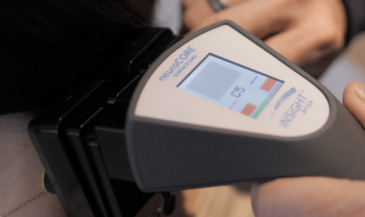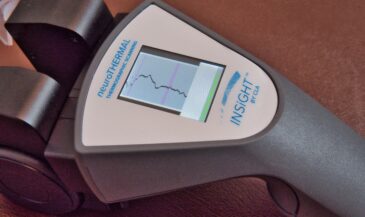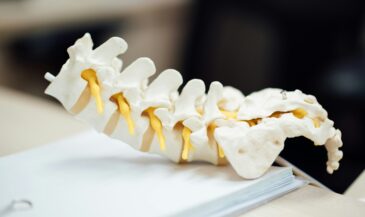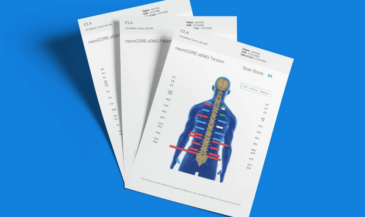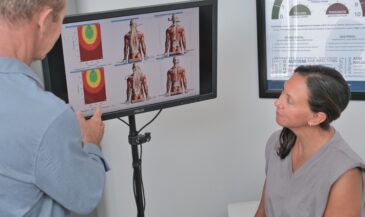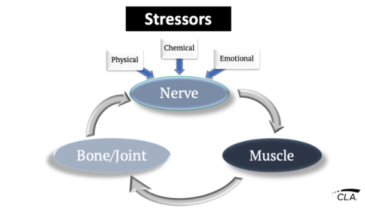A previous column (1) revealed the news that physical therapy is no more effective than a placebo for the relief of pain in musculoskeletal conditions, and may actually make things worse. The evidence in support of this claim is growing.
According to a recent study by Feine and Lund (2) of McGill University, there is little evidence that physical therapy and physical therapy modalities provide any long-term efficacy greater than placebo. The therapies which were examined included exercise, ultrasound, thermal agents, acupuncture, low-intensity laser therapy, electrical stimulation, and combination therapies for a variety of musculoskeletal pain conditions including chronic back pain. Patients receiving either therapy or placebo seemed to do better during either. It was concluded that giving a patient attention has a powerful effect, regardless of treatment.
The authors wrote, “We are not pleased to have to report that…our results suggest that none of the therapies under review cause improvements in symptoms of chronic musculoskeletal pain or in quality of life that outlast the therapy…including placebo.”
It doesn’t take a Nostradamus to realize that managed care groups and insurance companies aren’t going to continue to shell out easy money for treatments that don’t work. “Work” in this context means pain relief.
So what’s the musculoskeletal chiropractoid got left to keep the charges up? How about back school? More bad news. A randomized study of 4,000 persons in a back school educational program found that workers who attended the education group actually had a higher rate of back claims than the control group! According to a study by Daltroy et al (3) educating postal workers about back mechanics, posture, and “correct” ways of lifting proved to be “an expensive waste of time.” (4). The authors wrote, “The education program did not reduce the rate of low back injury, the time off work per injury, or the rate of repeated injury after return to work.”
Hmm. Let’s try industrial consulting. After all, ergonomics has been the dominant back pain prevention strategy of the last 50 years. And who is better suited to industrial consulting than the chiropractor? Well, before you sign the papers for that new boat, you might want to have a look at the editorial by Hadler (5) in the New England Journal of Medicine. According to Hadler, efforts to eliminate offending biomechanical stresses from the workplace have not had any positive effect on back pain or back pain claims in the workplace. The author wrote, “In fact, workers with back ‘injuries’ have increased in numbers and suffered more.” More discouraging news is available in a longer article in Spine (6).
“Ah,” you’re thinking, “he’s going to tell us about how we should stick to manipulation, since it is proven effective in treating back pain.” Sorry. Despite all the hoopla and hype surrounding the AHCPR Guidelines, things aren’t as rosy as some pied pipers might lead you to believe.
Skargren et al (7) reported the results of a study involving 323 patients who were assigned to care by a physiotherapist or a chiropractor. A visual analog scale and the Oswestry pain disability questionnaire were used to evaluate the results. Those receiving chiropractic “treatment” received primarily “manipulation.” Those in the physiotherapy group received a variety of treatment modalities. The mean number of chiropractic visits was 7. The mean number of PT visits was 7.9. The conclusion: “Both chiropractic and physiotherapy as primary treatment reduced the symptoms. No difference in outcome or direct or indirect costs between the two groups could be seen, nor in subgroups defined as duration, history, or severity.”
Skargren’s team found that chiropractic “manipulation” was as good as physiotherapy at symptom relief. And according to Feine and Lund, PT is as good as a placebo. Does this mean we should all call Sally Struthers and seek new careers? Certainly not! It means that we must differentiate manipulation for the treatment of musculoskeletal pain from adjustment for the correction of vertebral subluxation.
Those who have been reading this column for a while have seen reports of research demonstrating the whole body benefits of chiropractic care. Some of these benefits include less use of medical care, including hospitalization and prescription drugs, and a greater perception of wellness. (8,9) This is where we excel.
Trying to keep one step ahead of the third party pay game is a recipe for clinical and financial disaster. There is no need for a third rate, symptom chasing medic in today’s health care system. However, there is a desperate need for a profession which offers a new level of thinking concerning health. The future of chiropractic lies in lifetime, subluxation-based, family wellness care in the context of a non-third-party dependent practice. Only in such an environment will the vision of a subluxation free world flourish.
References
1. Kent C: “Shake and bake.” The Chiropractic Journal, October 1997.
2. Feine JS, Lund JP: “An assessment of the efficacy of physical therapy and physical modalities for the control of chronic musculoskeletal pain.” Pain 1997;71:5.
3. Daltroy LH, Iversen MD, Larson MG, et al: “A controlled trial of an educational program to prevent low back injuries.” N Engl J Med 1997;337(5):322.
4. “Prevention program fails.” The Back Letter 1997;12(9):97.
5. Hadler NM: “Workers with disabling back pain.” New Engl J Med 1997;337(5):341.
6. Hadler NM: “Back pain in the workplace: What you lift or how you lift matters far less than whether you lift or when.” Spine 1997;22:935.
7. Skargren EI, Oberg BE, Carlsson PG, Gade M: “Cost and effectiveness analysis of chiropractic and physiotherapy treatment for low back and neck pain.” Spine 1997;22:2167.
8. Coulter ID, Hurwitz EL, Aronow HU, et al: “Chiropractic patients in a comprehensive home-based geriatric assessment, follow-up and health promotion program.” Topics in Clinical Chiropractic 1996;3(2):46.
9. Blanks RHI, Schuster TL, Dobson M: “A retrospective assessment of Network care using a survey of self-rated health, wellness and quality of life.” Journal of Vertebral Subluxation Research 1997;1(4).





